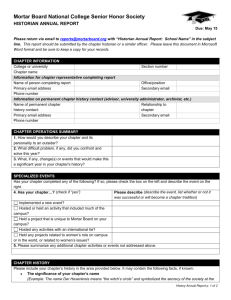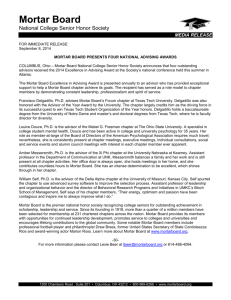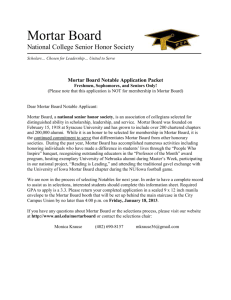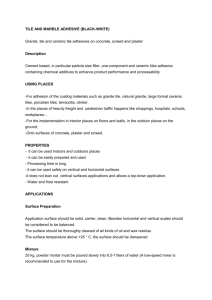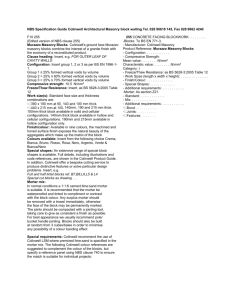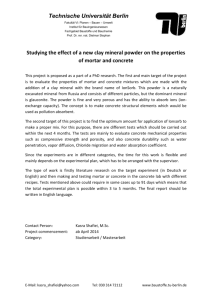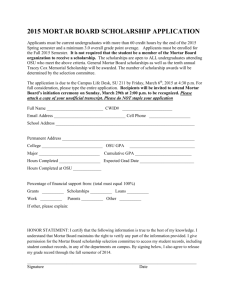Mortar Flow Test Summary - National Concrete Pavement
advertisement
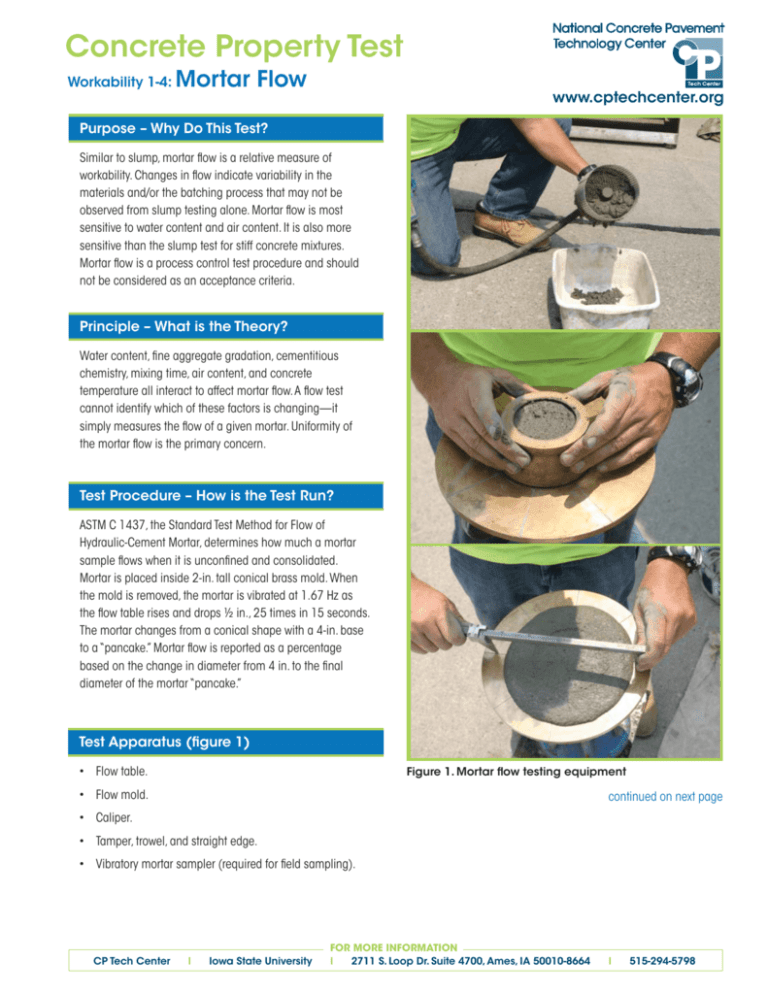
Concrete Property Test Workability 1-4: Mortar Flow www.cptechcenter.org Purpose – Why Do This Test? Similar to slump, mortar flow is a relative measure of workability. Changes in flow indicate variability in the materials and/or the batching process that may not be observed from slump testing alone. Mortar flow is most sensitive to water content and air content. It is also more sensitive than the slump test for stiff concrete mixtures. Mortar flow is a process control test procedure and should not be considered as an acceptance criteria. Principle – What is the Theory? Water content, fine aggregate gradation, cementitious chemistry, mixing time, air content, and concrete temperature all interact to affect mortar flow. A flow test cannot identify which of these factors is changing—it simply measures the flow of a given mortar. Uniformity of the mortar flow is the primary concern. Test Procedure – How is the Test Run? ASTM C 1437, the Standard Test Method for Flow of Hydraulic-Cement Mortar, determines how much a mortar sample flows when it is unconfined and consolidated. Mortar is placed inside 2-in. tall conical brass mold. When the mold is removed, the mortar is vibrated at 1.67 Hz as the flow table rises and drops ½ in., 25 times in 15 seconds. The mortar changes from a conical shape with a 4-in. base to a “pancake.” Mortar flow is reported as a percentage based on the change in diameter from 4 in. to the final diameter of the mortar “pancake.” Test Apparatus (figure 1) • Flow table. Figure 1. Mortar flow testing equipment • Flow mold. continued on next page • Caliper. • Tamper, trowel, and straight edge. • Vibratory mortar sampler (required for field sampling). CP Tech Center I Iowa State University FOR MORE INFORMATION I 2711 S. Loop Dr. Suite 4700, Ames, IA 50010-8664 I 515-294-5798 Workability 1-4: Mortar Flow, continued Test Method – Refer to ASTM C 1437 for Comprehensive Guidance 1. Obtain a representative mortar sample. a. b. Field samples should be obtained by vibrating a sample of concrete across a #4 sieve. Figure 1 shows an example of a sampling apparatus that fits on the end of a vibrator. Lab samples may be mixed or sieved. 2. Fill the mold with mortar in two 1-in. lifts, tamp each lift 20 times. 3. Strike the mortar off flush with the top of the mold. 4. Remove the mold. 5. Drop the table 25 times in 15 seconds. 6. Measure the diameter of the mortar. 7. Calculate and report the mortar flow as a percentage of the original base diameter. Output – How Do I Interpret the Results? Typical process control charts will be helpful in monitoring material and process uniformity. Construction Issues – What Should I Look For? Mortar flow testing may indicate changes in the mixture that are not discernable from slump testing alone. Variability in the mortar flow test results may indicate changes in the following: • Total water content of the mixture. • Aggregate moisture(s). • Mixing time. • Air content. • Concrete temperature. • Material incompatibilities. • Batching proportions and/or scale tolerances. APRIL 2008 This test summary is one of a set of summaries originally published in chapter 7 of the Testing Guide for Implementing Concrete Paving Quality Control Procedures (Fick, G., Iowa State University, Ames, Iowa, 2008). The testing guide is a product of a 17-state, Federal Highway Administration pooled-fund project, Material and Construction Optimization for Prevention of Premature Pavement Distress in PCC Pavements, TPF-5(066). The project was managed by the National Concrete Pavement Technology Center at Iowa State University. Any opinions, findings, and conclusions or recommendations expressed in this material are those of the authors and do not necessarily reflect the view of Federal Highway Administration or Iowa State University. Iowa State University does not discriminate on the basis of race, color, age, religion, national origin, sexual orientation, gender identity, sex, marital status, disability, or status as a U.S. veteran. Inqueries can be directed to the Director of Equal Opportunity and Diversity, Iowa State University, 3680 Beardshear Hall, 515-294-7612.

